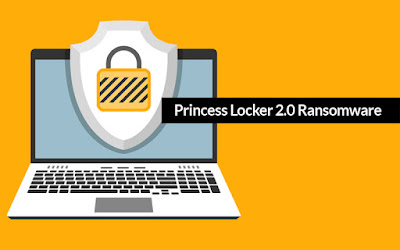How to remove Princess Locker 2.0 Ransomware from your system?
What is Princess Locker 2.0 Ransomware? Princess Locker 2.0 Ransomware is a new variant of Princess Locker Ransomware. This ransomware silently intrudes a computer and uses a strong encryption algorithm to encrypt the data.
What is Princess Locker 2.0 Ransomware?
Princess Locker 2.0 Ransomware is a new variant of Princess Locker Ransomware. This ransomware silently intrudes a computer and uses a strong encryption algorithm to encrypt the data. In order to decrypt the data, it leaves a ransom note which asks for an amount anywhere between 0.06 to 0.18 BTC as a ransom.
Threat Summary
- Name: Princess Locker 2.0 Ransomware
- Targeted Operating System: Windows XP, Windows Vista, Windows 7 and Windows 8/10
- Category: Ransomware, Malware
- Symptoms: It encrypts the user files, leaves a ransom note on the system and adds a random combination of characters as an extension to the files.
How did Princess Locker Ransomware got installed on your PC?
- The cybercriminals use various strategies for malware distribution which include –
- Software Bundling: Software bundling is the process in which a malicious program is distributed with other free software, to get an unnoticed entry into your computer system. When a user installs a free application, the malicious programs gains a front door entry with the free application, the user has downloaded. Thus, it is a good idea to keep an eye on the installation screens while installing these free applications.
- Infected Storage Devices: Your system can also get infected by using removable media such as USB hard drives and jump drives without scanning them with an anti-virus.
- Spam Emails – Spamming is the most economic and common method used for the distribution of such malware. The targeted users get genuine looking emails which contain .doc, .txt, and other similar attachments. These attachments can be named as anything which can grab the user’s attention and triggers him/her to open the attachment. As soon as the user opens this attachment, the malware infects the user’s computer system.
- Malicious Websites or Malovalent Advertisments: The malicious websites are the ones which are created just for promoting the malware infections. Such websites include but are not limited to porn sites, torrent sites and other free downloading platforms. By visiting such websites, the adware infects the user’s computer without permission. Fake advertisements and updates like Flash player and windows updates which ask the user to update to the latest version are a few examples. When the users click on such links, their computer system gets infected. That is why, it is highly recommended to resist clicking on such links. Also avoid clicking on advertisements offering free stuff such as Win an iPhones, cars or free overseas trips etc.





Comments
Post a Comment